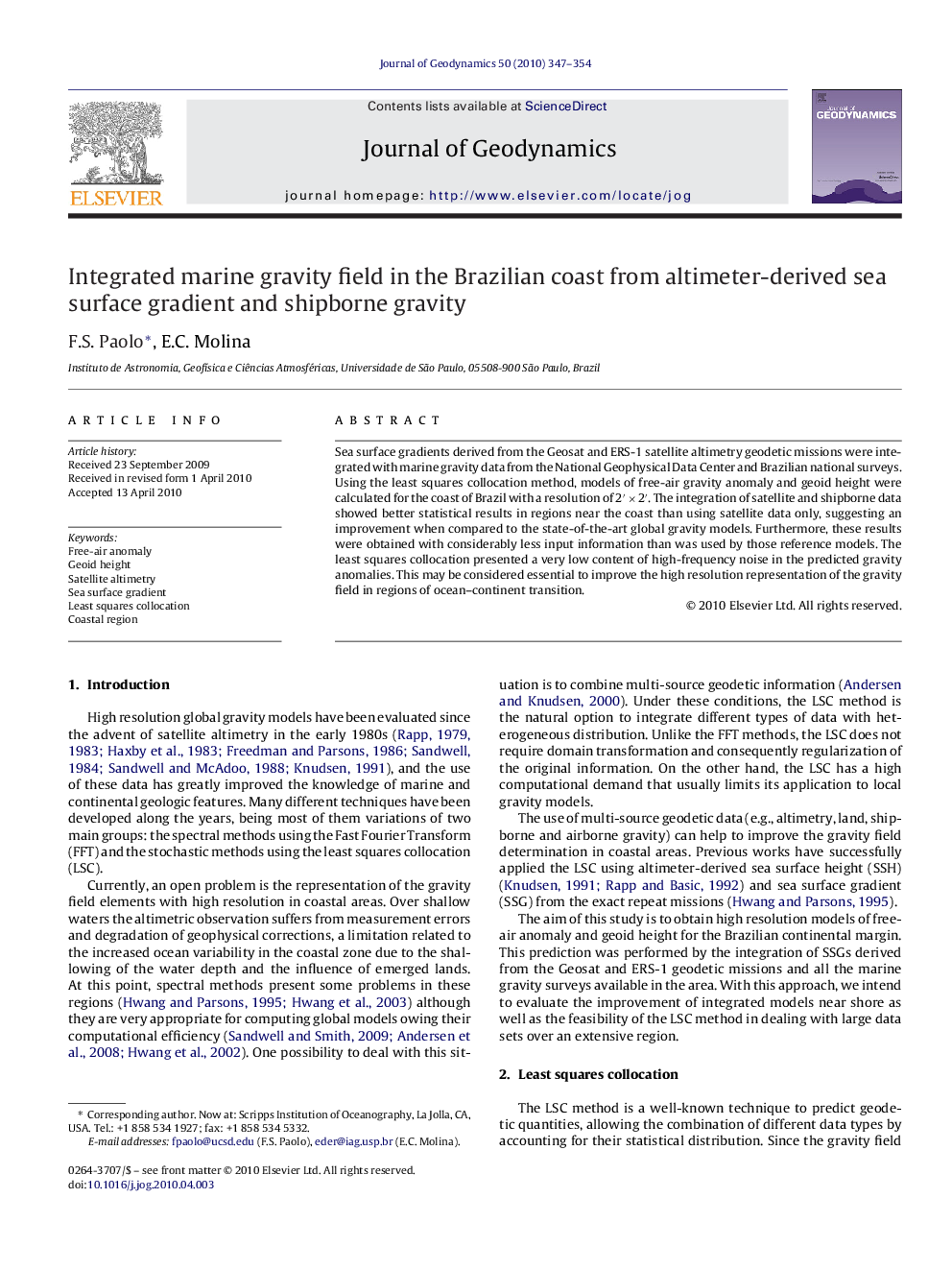| Article ID | Journal | Published Year | Pages | File Type |
|---|---|---|---|---|
| 4688486 | Journal of Geodynamics | 2010 | 8 Pages |
Sea surface gradients derived from the Geosat and ERS-1 satellite altimetry geodetic missions were integrated with marine gravity data from the National Geophysical Data Center and Brazilian national surveys. Using the least squares collocation method, models of free-air gravity anomaly and geoid height were calculated for the coast of Brazil with a resolution of 2′ × 2′. The integration of satellite and shipborne data showed better statistical results in regions near the coast than using satellite data only, suggesting an improvement when compared to the state-of-the-art global gravity models. Furthermore, these results were obtained with considerably less input information than was used by those reference models. The least squares collocation presented a very low content of high-frequency noise in the predicted gravity anomalies. This may be considered essential to improve the high resolution representation of the gravity field in regions of ocean–continent transition.
